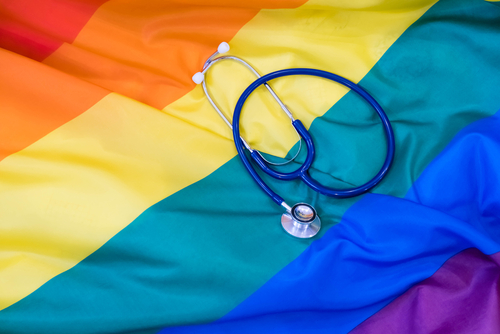The LGBTQ+ Community Experiences These Five Crises Related to Healthcare
- Lack of Transition-related Healthcare
- Difficulty Finding Primary Care Providers
- Lack of Access to Care
- Discrimination By Providers, Pharmacists and Insurers
- Higher Rates of STIs
People who are a part of the LGBTQ+ have a more challenging time in many parts of their lives, including these five healthcare crises affecting the LGBTQ+ community. These healthcare crises have many causes, but most of them come down to discrimination. Understanding these crises in healthcare for members of the LGBTQ+ could help allies, healthcare providers and members of the community take positive actions for changing the status quo and helping people who are LGBTQ+ have healthier lives.

Related resource: Top 20 Part-Time MBA Degrees with a Specialization in Healthcare Management
1. Lack of Transition-related Healthcare
People who are at any stage of the transition process often find themselves with a lack of access to the type of care they need. This includes a lack of access to gynecology and urology specialty services as well as primary care services. Not a lot of doctors have gone through the training that is necessary for providing the optimal level of healthcare to people who are transitioning, and the providers themselves may feel like they would not be able to do a good job because of their lack of training.
2. Difficulty Finding Primary Care Providers
Finding primary care providers can be a challenge, but members of the LGBTQ+ community face an even bigger obstacle with getting the basic healthcare services they need from a primary care doctor. In a survey of people who are in the LGBTQ+ community, 29 percent reported that a primary care doctor refused to see them because of their sexual orientation or perceived gender or gender identity. Of the people surveyed, 6 percent had the doctor refuse to provide any healthcare services at all because of their identity as a member of the LGBTQ+ community.
3. Lack of Access to Care
In a 2017 survey, 14 percent of members of the LGBTQ+ community reported being harassed, belittled or insulted by scheduling or reception people at a provider’s office. Another 6.7 percent avoided even trying to access care because of their past experiences with the same provider. In non-metro areas, the lack of access to care is even worse. About 41 percent of respondents said that they would have a hard time finding care at a hospital where they live.
4. Discrimination By Providers, Pharmacists, and Insurers
As of July 2018, 37 states have no ban on discrimination of people in the LGBTQ+ who are seeking healthcare. This means that doctors, pharmacists, and even insurance companies can refuse a particular service or all services. Discrimination in the healthcare setting may cause poor quality of care, lack of necessary care, overlooking of symptoms and dismissal of the person’s health concerns or condition.
5. Higher Rates of STIs
Despite decades of targeted messaging about safer intercourse, sticking with one partner and knowing one’s status, people in the LGBTQ+ community continue to have higher rates of STIs than cis-, heterosexual people. According to the Centers for Disease Control and Prevention, black males who have intercourse with males continue to have the highest rate of HIV infection. Members of the LGBTQ+ community are also more likely to be diagnosed at more advanced stages of STIs, resulting in more complications.
These crises in healthcare for people in the LGBTQ+ community do not have to continue. A concerted effort by healthcare providers, public health officials, lawmakers, allies and activists could create change. Understanding these five healthcare crises facing the LGBTQ+ community is a good first step toward enacting changes for the better.